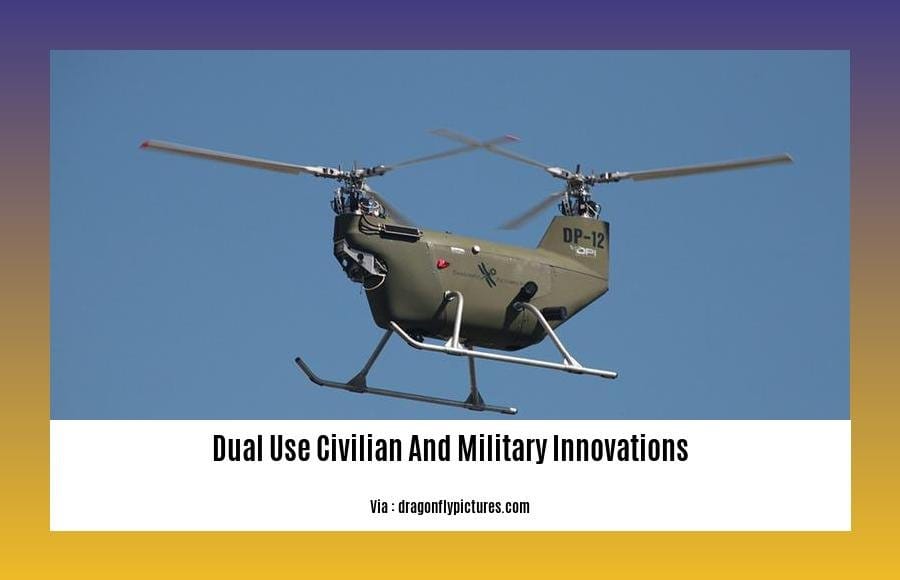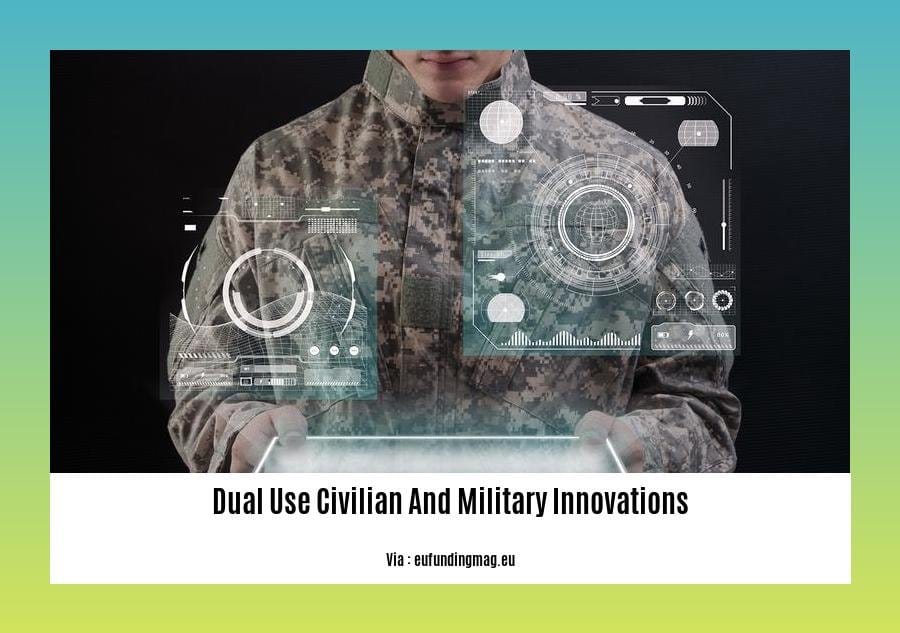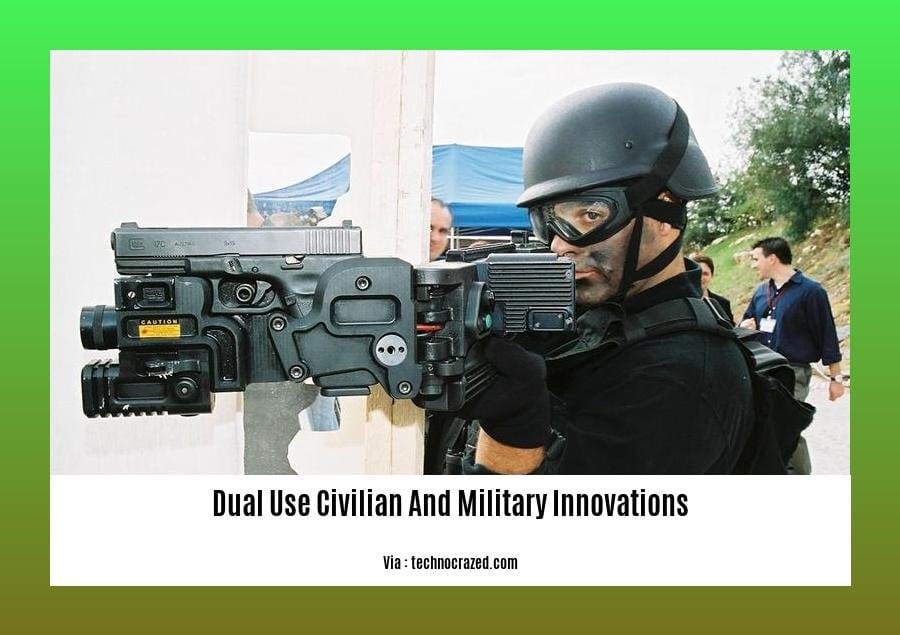**Dual-Use Civilian and Military Innovations: Reshaping the Future of Technology** – The convergence of civilian and military technologies is driving groundbreaking advancements that are transforming both the battlefield and our daily lives. From advanced materials to AI-powered systems, dual-use innovations are reshaping the future of technology in unprecedented ways.
Key Takeaways:

- Dual-use technologies have applications in both civilian and military contexts.
- Advances in artificial intelligence, materials science, and communications connect civilian and defense innovations.
- Dual-use technologies improve defense capabilities in surveillance, communication, and reconnaissance.
- Civilian sectors benefit from advancements in healthcare, transportation, and manufacturing.
- Economic opportunities emerge through new markets and industries created by dual-use technologies.
- Governments regulate and promote the development of dual-use technologies.
- National security concerns involve potential proliferation and misuse of these technologies.
Dual-Use Civilian and Military Innovations
Blurring the Lines Between Defense and Daily Life
What are Dual-Use Technologies?
- Definition: Innovations with both civilian and military applications.
- Examples: Artificial intelligence, advanced materials, communication systems.
Convergence of Advancements
- Impact: Advancements in AI, materials science, and communications break down barriers between civilian uses and defense capabilities.
Military Impact
- Benefits: Enhanced surveillance, improved communications, and effective reconnaissance.
Civilian Benefits
- Applications: Healthcare advancements, transportation efficiency, manufacturing optimization.
Economic Advantages
- Growth: Dual-use technologies drive economic growth by creating new markets and industries.
Government’s Role
- Regulations and Promotion: Governments balance regulation and promotion of dual-use technologies.
National Security Implications
- Concerns: Protentional for proliferation and misuse.
Explore innovators whose work had military applications and their pioneering innovations with defense capabilities, which became the military technology’s pioneering building blocks throughout history.
Sensor Technologies for Improved Situational Awareness
When it comes to making critical decisions on the battlefield, situational awareness is key. Imagine being able to see through walls to anticipate enemy movements or detect hidden threats from miles away. That’s where sensor technologies come into play. They’re revolutionizing warfare by enhancing our ability to perceive and understand our surroundings.
How Do They Work?
Sensor technologies collect data from various sources, such as radar, infrared cameras, and acoustic sensors. This data is then processed and analyzed to create a comprehensive picture of the battlefield, providing soldiers with real-time information about enemy positions, obstacles, and potential hazards.
Benefits of Enhanced Situational Awareness
- Improved Decision-Making: With a clear understanding of the battlefield, commanders can make informed decisions and respond to threats swiftly.
- Increased Survivability: Enhanced situational awareness helps soldiers avoid enemy ambushes and hazardous areas, reducing casualties.
- Enhanced Mission Success: By providing soldiers with a clear picture of the battlefield, sensor technologies contribute to the overall success of military operations.
Examples of Sensor Technologies in Action
- Integrated Sensor Architecture (ISA): This system connects various sensors into a single network, allowing soldiers to access real-time data from multiple sources.
- Sensor Fusion: By combining data from different sensors, commanders can create a more accurate and comprehensive understanding of the battlefield situation.
- Digital Monitoring: Sensors are increasingly being used to monitor and analyze the battlefield, providing valuable insights for decision-makers.
Key Takeaways:
- Sensor technologies enhance situational awareness by collecting and analyzing data from multiple sources.
- Enhanced situational awareness leads to improved decision-making, increased survivability, and enhanced mission success.
- ISA, sensor fusion, and digital monitoring are examples of sensor technologies in practical use.
Citation: Army’s Interoperable Sensors Solution Keeps Military Modernization on Track
Robotics for Precision and Efficiency
Collaborative efforts between the military and civilian sectors have long driven innovation, leading to technological advancements with dual-use applications. Robotics for precision and efficiency is one such area where military advancements are finding their way into civilian industries.
Military needs for precision and efficiency in combat have spurred the development of advanced robotics. From unmanned aerial vehicles (UAVs) to autonomous ground vehicles, robots are increasingly used for surveillance, target acquisition, and even combat operations. Their capabilities in navigation, obstacle avoidance, and data processing offer significant advantages in military scenarios.
These same capabilities translate seamlessly into civilian applications. In manufacturing, robots bring precision and efficiency to assembly lines, reducing errors and increasing productivity. In logistics, they automate tasks such as inventory management and package delivery, optimizing efficiency and reducing costs.
One notable example is in the healthcare industry, where surgical robots have revolutionized minimally invasive procedures. Their precision and dexterity allow surgeons to perform complex operations with greater accuracy and less trauma, leading to faster recovery times and improved patient outcomes.
Key Takeaways:
- Collaboration between civilian and military sectors fosters innovation in dual-use technologies.
- Robotics developed for precision and efficiency in military applications are finding uses in civilian industries.
- Advanced robotics offer benefits in manufacturing, logistics, and healthcare, among others.
Most Relevant URL Source:
Communication systems for secure and reliable connectivity
Secure and reliable communication systems are essential for modern warfare. They allow soldiers to share information quickly and efficiently, coordinate their efforts, and maintain situational awareness. Various innovations can enhance these systems, such as advanced encryption techniques, improved signal processing algorithms, and new network architectures.
5G technology is one promising area for communication system innovation. 5G offers higher speeds and response times than previous generations of wireless technology, making it ideal for use in military applications. For example, 5G could be used to provide real-time video feeds from drones or other unmanned vehicles. It could also be used to connect soldiers to each other and to remote command centers.
Another important area of communication system innovation is the development of software-defined radios (SDRs). SDRs are radios that can be programmed to operate on different frequencies and protocols. This flexibility makes them ideal for use in military applications, where the need for secure and reliable communication can change rapidly.
Key Takeaways:
- Secure and reliable communication systems are essential for modern warfare.
- 5G technology and software-defined radios (SDRs) are two promising areas for communication system innovation.
- Innovations in communication systems can have significant benefits for both military and civilian applications.
Most Relevant URL Source:
- DoD Announces $600 Million for 5G Experimentation and Testing













